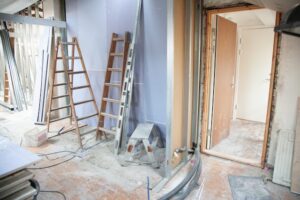Any plumbing system might be troubled by water running in the other way. Contaminated water reverses its course and enters your home’s pure water supply, therefore endangering health and safety. If left untreated, this pollution may contaminate drinking water, lead to waterborne diseases, and result in costly repairs. Many households and companies suffer backflow without even recognizing it, as the symptoms can go undetectable or misinterpreted. Saving your water supply and preventing expensive damage depend on early recognition of these indicators. Knowing the underlying causes, symptoms, and fixes goes beyond simple prevention to ensure a safe and effective plumbing system all year round.
Unusual Drop in Water Pressure Over the Property
Backflow problems may be indicated by clearly declining water pressure in many parts of a structure. Backflow causes water to flow, opposing the natural water pressure equilibrium. Backflow may be the reason if the water pressure suddenly declines without a clear explanation, like an adjacent building or pipe repair. This pressure imbalance might point to polluted water entering your clean water pipes, thereby limiting flow and maybe damaging plumbing parts. Backflow may affect everything in a home, including dishwashers and toilets, as well as showers and faucets.
Foul Odors Coming from Faucets or Drains
Water should smell nothing, but unusual smells-such as sulfur or rotten eggs coming from faucets or drains point to backflow-caused pollution. Non-potable water introduces a variety of contaminants, including sewage, chemicals, or stagnant water from outside sources, when it joins the clean water supply. The kind of pollutant added to the water system may affect the scent. Sewage backflow, for instance, will have a clearly bad smell; chemical pollution from irrigation systems might bring metallic or chlorine-like scents. Before it becomes a health risk, immediate backflow testing services are very crucial to identify the source of contamination and restore water quality.
Unusual Water Discoloration in Systems
Clear water should always look that way. Any brown, yellow, or murky discoloration points to a plumbing system defect. Sediments, rust, or other contaminants may obscure your water when backflow brings alien compounds into your water lines. While greenish or yellowish Tues may suggest chemical pollution from irrigation systems or industrial sources, brownish water usually signifies corrosion or sediment accumulation. This discoloration not only bothers you but also seriously compromises your health. Bathing or washing dishes with discolored water exposes people to dangerous pollutants. Severe incidents of discolored water may ruin plumbing fixtures and harm washing machines, among other items.
Several Occasions of Slower Drains
Slow drainage over a property might indicate more than just a localized obstruction. Common sluggish drainage indicates backflow, compromising the plumbing system overall. Contaminated water flowing backward may jam pipes with trash, therefore limiting water circulation. Sludge or foreign particles brought into the drainage system by backflow can cause sluggish and erratic water flow via showers, toilets, and sinks. Over time, this drainage problem may aggravate pipes unnecessarily and raise backup danger.
Unexpected Moisture or Leaks Around Valves
Often indicating trouble is moisture buildup or inexplicable leaks around backflow protection systems like check valves or pressure vacuum breakers. These devices are meant to prevent the reverse flow of water. However, if compromised, they could leak and cause backflow problems. The wetness indicates that the preventive mechanism did not seal properly, enabling polluted water to recirculate into the system of cleanliness.
Presence of Air Bubbles in the Water
The faucet water should run smoothly. Often, the result of backflow, the presence of air bubbles, or spitting water points to a disruption in the water pressure. Backflow may cause air to get stuck in the plumbing system, therefore producing varying water flow and bubbles in the water stream. These bubbles might potentially indicate the mixing of non-potable water with clean water, therefore compromising the water quality.
Complaints About Health Related to Water Consumption
Unexplained health issues among building occupants might indicate backflow pollution. Consuming or getting into touch with water contaminated with sewage, chemicals, or dangerous microbes could cause gastrointestinal disorders, skin irritation, and respiratory problems, among other diseases. Particularly for those with compromised immune systems or underlying diseases, even brief contact with polluted water might cause problems.
Conclusion
To remain in the best shape, plumbing systems need continuous awareness. Not only is backflow contamination bothersome, but it may seriously affect plumbing infrastructure, health, and water quality. Early backflow symptoms should be addressed aggressively to guarantee a safe, effective water supply and lower the risk of costly repairs.


